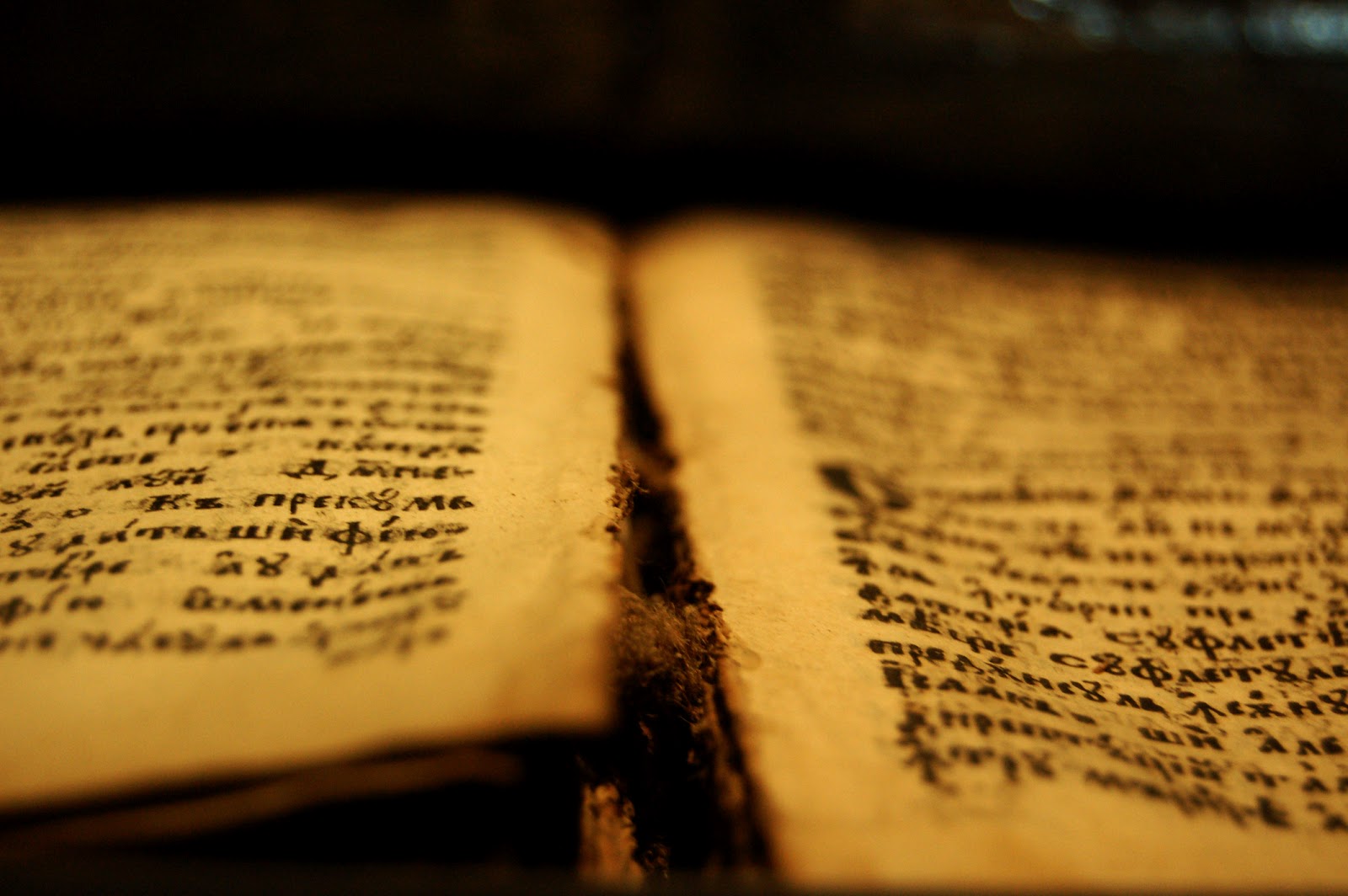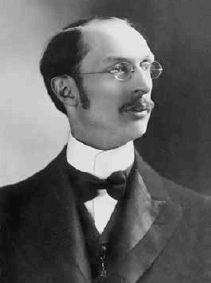 “[W]e want to emphasize there is no need to buy new scriptures,” said Elder Neil L. Anderson of the Quorum of the Twelve Apostles after the release of the 2013 edition of the Standard Works. “The current edition of the scriptures…will continue to serve Latter-day Saints very well” (Deseret News, “LDS Church Announces new scripture edition). I understand there is no need to buy new scriptures, but I wish you didn’t feel the need to emphasize it. This is the first major revision of the LDS Scriptures in over 30 years. I wish there was a need to buy new scriptures.
“[W]e want to emphasize there is no need to buy new scriptures,” said Elder Neil L. Anderson of the Quorum of the Twelve Apostles after the release of the 2013 edition of the Standard Works. “The current edition of the scriptures…will continue to serve Latter-day Saints very well” (Deseret News, “LDS Church Announces new scripture edition). I understand there is no need to buy new scriptures, but I wish you didn’t feel the need to emphasize it. This is the first major revision of the LDS Scriptures in over 30 years. I wish there was a need to buy new scriptures.
Stephen L Richards said, “A revelation to our living president would be as readily accepted and become as much a part of our scripture as the revelations given to the Prophet Joseph [Smith]” (April 1932 General Conference). I agree. If they had announced that the D&C was going to have new sections added everyone would be excited. The fact there was so much excitement for something as simple as changing the missionary age is evidence of that. However, our leaders have been slow to canonize.
The last addition to the scriptures was Official-Declaration 2, received almost 35 years ago. As you can see by how it’s named, this was a statement; no revelation is contained in it, only the report that a revelation has been received. The last record of a revelation in the D&C is found in Section 138, received nearly 100 years ago. Even it wasn’t canonized until 1976.
It is a common question in the church: Why don’t we have more revelations? The Book of Commandments, the first collection of Joseph Smith’s revelations, was published only 3 years after the founding of the church. We’ve been waiting for a single addition to our canon for over 30 years.
 Perhaps it’s simply a question of canonization. Have canon-level revelations been received over the past 100 years that haven’t been canonized? Do we revere the past revelations while ignoring the current? After all, “Even in the Church,” said President Spencer W. Kimball, “many are prone to garnish the sepulchers of yesterday’s prophets and mentally stone the living ones” (Instructor, 95:257). President Kimball also said, “Expecting the spectacular, one may not be fully alerted to the constant flow of revealed communication. I say, in the deepest of humility, but also by the power and force of a burning testimony in my soul, that from the prophet of the Restoration to the prophet of our own year, the communication line is unbroken, the authority is continuous, a light, brilliant and penetrating, continues to shine. The sound of the voice of the Lord is a continuous melody and a thunderous appeal. For nearly a century and a half there has been no interruption.” (Ensign, May 1977, 78).
Perhaps it’s simply a question of canonization. Have canon-level revelations been received over the past 100 years that haven’t been canonized? Do we revere the past revelations while ignoring the current? After all, “Even in the Church,” said President Spencer W. Kimball, “many are prone to garnish the sepulchers of yesterday’s prophets and mentally stone the living ones” (Instructor, 95:257). President Kimball also said, “Expecting the spectacular, one may not be fully alerted to the constant flow of revealed communication. I say, in the deepest of humility, but also by the power and force of a burning testimony in my soul, that from the prophet of the Restoration to the prophet of our own year, the communication line is unbroken, the authority is continuous, a light, brilliant and penetrating, continues to shine. The sound of the voice of the Lord is a continuous melody and a thunderous appeal. For nearly a century and a half there has been no interruption.” (Ensign, May 1977, 78).
I’m going to look at a comparison between modern revelation and old revelation. When I say modern revelation I mean more recent than Joseph Smith. Our church leaders calling Joseph Smith’s nearly 200 year old revelations “modern revelation” makes me giggle every time. At some point they’re not going to be modern anymore. I’m going to do this comparison by categorizing the revelations of the Doctrine and Covenants by type, adapting these categories from “Doctrine and Covenants Compendium” by Sidney B. Sperry. After listing a category along with some sections of the D&C that go in that category, I will list at least one document or revelation that has not been canonized that fits that category. In some ways this could make us see the D&C more clearly for what it is.
I’m not trying to tear down the Doctrine and Covenants, but perhaps if we see the categories along with more recent examples of them, we won’t be discouraged that the Church is devoid of revelation in modern times. Not all sections of the D&C will be included in the categories. Furthermore, I will not necessarily be arguing that each revelation I list should be canonized. I will also not be arguing for the quality of the revelations listed, only that they exist and fit the category. What I’m trying to do is demonstrate that we don’t have a revelation problem, we have a canonization problem.
Categorization of D&C Sections with More Modern Examples
Calling of missionaries – Sections 4, 11, 12, 14, 30, 79, 80, 99, etc.
President Henry B. Eyring has testified that mission calls are made by revelation, “I have had [many] experiences feeling of the Holy Ghost…But I’ve never felt what I have felt as I have…participated in the assigning of missionaries…Because of technology, it is possible for us to have your picture and the information about you displayed. And then quickly, on that same screen, all the missions of the Church with all of their needs are displayed. Within minutes, and sometimes less than a minute, the impression comes so powerfully that it would be, if it were a single instance, something that you would never forget. Can you imagine sitting there for hours at a time, having that happen time after time without interruption? I testify to you that it is real…[The Lord] somehow not only knows you but loves you enough to ensure that your call is where He needs you to go to teach the children of our Heavenly Father.” (Pres. Henry B. Eyring, “Called of God,” address delivered at the Missionary Training Center, Aug. 26, 1997)
Restoration of Priesthood – 13
The revelation that the Priesthood was given to all worthy males is just as significant as the restoration of the Priesthood itself. This is of course Official-Declaration 2.
Declarations of beliefs – 134
Section 134 is a statement of belief on how members of the Church should interact with Governments. The Living Christ and the Family Proclamation are two fairly recent statements of belief.
Revelations to individuals – 6, 8, 9, 15, 16, 19, etc.
Revelations to individuals continue with Patriarchal Blessings. As just one example of prophecy contained in a Patriarchal Blessing, George Albert Smith’s Patriarchal blessing said he would be an apostle. (Teachings of George Albert Smith, ed. Robert and Susan McIntosh, xix.)
Visions – 76, 110
Section 76 is so great it is called “The Vision.” Joseph F. Smith’s revelation of the Spirit World (D&C 138) nearly matches it.
Words of angels – 2, 13, 17
The words of angels have not ceased if you know your church history. George Albert Smith’s grandfather appeared to him and said, “I would like to know what you have done with my name.” George Albert said, “I have never done anything with your name of which you need be ashamed.” His grandfather took him in his arms and the dream ended. (George Albert Smith, Sharing the Gospel with Others, Deseret Book Co., 1948, pp. 111-112.) Wilford Woodruff’s dream of the founding fathers – signers of the Declaration of Independence appeared to him and asked why temple work had not been done for them. (Journal of Discourses 19:229). Russell M. Nelson was present when Hugh B. Brown told Joan Lee (President Lee’s widow): “I had a glorious visit with Harold last night. He is just fine. It was so good to visit with him.” (Temple to Dot the Earth, pp. 174-178).
Prayers – 13, 65, and 109
Section 109 is the Kirtland Temple Dedicatory prayer. Joseph Fielding Smith said, “This pattern was set by the Prophet Joseph Smith in the dedication of the Kirtland Temple. The prayer given on that occasion was revealed to him by the Lord; all prayers used since then have been written by the spirit of inspiration and have been read by such of the Brethren as have been appointed to do so. The prayer I have prepared for dedication of this Provo Temple is no exception.” (Church News, Feb. 12, 1972)
Revelations on Priesthood – 2, 13, 20, 68, 84, 107, 110
The organization of the Priesthood and its various duties has seen substantial change and evolution. These changes have not been canonized, but they’ve happened all the same. The office of Seventy has had some of the greatest changes (http://www.lds.org/liahona/2009/09/the-saga-of-revelation-the-unfolding-role-of-the-seventy?lang=eng). We’ve also seen the Aaronic Priesthood become a program for young men (http://digitalcommons.usu.edu/cgi/viewcontent.cgi?article=1026&context=mormonhistory, pp. 80-136).
Letters – 127, 128
Letters are often delivered to the Saints by the First Presidency. Spencer W. Kimball said, “The revelations come as requested and needed; for instance, in 1947, when President George Albert Smith was President of the Church, there came a revelation to the Church regarding missions, and counselors were given to mission presidents for the first time. That was immediately published all through the Church, in the Church Section of the Deseret News, an official letter to all mission presidents, and everybody in the Church had access to the knowledge of that change in the policy of the Church within a matter of days after it had been given. It was not necessary that that revelation be included in the Doctrine and Covenants. They are all in the minutes and in the files. Revelations are continuous, and this Church is based on revelation.” (Speeches of the Year, Brigham Young University, January 13, 1967.)
These letters contain the teachings on baptisms for the dead. Work for the dead has changed and evolved since then with revelation. The Saints often had themselves sealed, or “adopted,” to Joseph Smith, Brigham Young, or other Church leaders of their day rather than to their own fathers and mothers. President Woodruff on April 5, 1894 said: “When I went before the Lord to know who I should be adopted to … , the Spirit of God said to me, ‘Have you not a father, who begot you?’ ‘Yes, I have.’ ‘Then why not honor him? Why not be adopted to him?’ ‘Yes,’ says I, ‘that is right.’ I was adopted to my father, and should have had my father sealed to his father, and so on back; and the duty that I want every man who presides over a temple to see performed from this day henceforth and forever, unless the Lord Almighty commands otherwise, is, let every man be adopted to his father. … That is the will of God to this people. (Teachings of the Presidents of the Church: Wilford Woodruff, xxxiv).
Doctrinal matters such as the nature of the Godhead
The First Presidency has released doctrinal statements such as The Origin of Man in November, 1909 and The Father and the Son in June 30, 1916.
Miscellaneous
There are many programs in the church that are argued to be inspired such as Home Teaching, Church Welfare, and the Perpetual Education Fund.
Callings – 81
Heber J. Grant was seeking the will of the Lord in appointing a new member of the Quorum of the Twelve Apostles. As he pondered this responsibility, his thoughts turned repeatedly to his lifelong friend Richard W. Young, a faithful Latter-day Saint and a proven leader. President Grant discussed this possibility with his counselors, who supported his decision. When he finally felt confident with this course of action, he wrote his friend’s name on a piece of paper and took the paper with him to the weekly temple meeting with the First Presidency and the Quorum of the Twelve. However, when he was about to present the name for the approval of his Brethren, he was unable to do so. Instead of presenting the name of Richard W. Young, he presented the name of Melvin J. Ballard, a man whom he hardly knew. (Teachings of the Presidents of the Church: Heber J. Grant, 181).
Prophecies of The last days – 29:9-29, 34:5-12, 45:16-75, 88:86-116, 101:22-34, 133
Gordon B. Hinckley said, “The vision of Joel has been fulfilled wherein he declared: ‘And it shall come to pass afterward, that I will pour out my spirit upon all flesh; and your sons and your daughters shall prophesy, your old men shall dream dreams, your young men shall see visions. And I will show wonders in the heavens and in the earth, blood, and fire, and pillars of smoke. The sun shall be turned into darkness, and the moon into blood, before the great and the terrible day of the Lord come. (Joel 2:28-32).” (Gordon B. Hinckley, Ensign, Nov. 2001, 4).
Commands to Build Temples – 95
Prophecies of international temples were made as early as August 1906, when President Joseph F. Smith visited Zurich, Switzerland, and predicted that “the time would come when temples to the Most High would be built in various countries of the world.” Only four temples were in operation at the time—all in Utah. (Improvement Era 1955: LVIII.9) President Heber J. Grant pronounced a similar prophecy in 1923 at the dedication of the temple in Cardston, Alberta: “I have no doubt in my mind that temples of the Lord will be erected in Europe, none whatever. How soon that will come I do not know. It will not come until the spirit of peace has increased among the people of Europe.” (Temple to Dot the Earth, 157). David O. Mckay announced the Bern Switzerland temple in 1952. And of course there is the announcement from President Hinckley that smaller temples would be built in areas without enough members to support a large building (October 1997 Conference).
Items of Instruction – 130, 131 – Food storage (President J. Reuben Clark, Jr, April 1937 General Conference)
Revelation on the Word of Wisdom – 88 – Counsel against drugs (Gordon B. Hinckley, Ensign, Nov. 1989, 48).
Minutes of a meeting – 44, 102. Section 102 is a general conference. We get General Conference in the Ensign twice a year.
Explanations of Scripture – 74, 77, 113 – We receive explanations of scripture all the time. (Gordon B. Hinckley, Ensign, Nov. 2001, 4).
Travel West – 136
The call from Brigham Young to travel West was superseded when President McKay began asking people to stay where they are rather than moving to Utah (see David O. McKay and the Rise of Modern Mormonism, 363-367). The call now is to “build up the stakes of Zion.”
Unpublished Revelations
Some revelations not published from Joseph Smith or other leaders. There are some revelations that aren’t published today or are difficult to find. Not all revelations are canonized in the Doctrine and Covenants. Joseph Fielding Smith said, “But many revelations have been given to the Church since the death of Joseph Smith. Some of these have been published; some have not. It has been my privilege to read and handle a number of them that are still in the manuscript and have not as yet been given to the world for a wise purpose in the Lord. But they are on file and will be preserved.” (Doctrines of Salvation, 280).
Summary
So the church has seen many revelations and inspired changes. Some have simply been announced and some have recorded revelations to go along with them. If we have all of these revelations, then why aren’t any being canonized? Why don’t Prophets say, “Thus Saith the Lord” anymore? Could a change occur to bring more canonization? These questions and more will be answered in the exciting conclusion: Part II – Why They Don’t Canonize and What Can Be Done About It.






I recently posed the question in Sunday school of “why don’t we receive any more doctrine in our era?”. My thoughts were right along with your excellent post. I was hypothesizing that one big reason is because we aren’t actively pursuing the mysteries of the kingdom of heaven. As such the Lord doesn’t think we are ready for more. If this is true it bothers me as to the complacency of the collective church. I understand that individuals are receiving revelation and great insight into the mysteries of the kingdom of heaven, but as a whole we have been very stagnant as a church for decades and decades.
Some of the class members responses to my question shocked me. Some members pointed to the recent change of missionary age and temples being built as evidence that we are being given new doctrine, to which I replied that those are more policy changes than doctrinal additions. Then some answered that the reason we haven’t received any more doctrine is because we have all we need to attain salvation and don’t need any more. That fortunately made some members groan when they heard that. One member even replied with a response of, “that sounds an awful lot like ‘A bible! A bible! We have already got a bible!'” It made me happy to see that not all members are content with the knowledge we have received and are anxiously looking for more light and knowledge.
One older, wise brother in the ward came up to me after the lesson and said the answer to my original question of why we haven’t received more doctrine was given in the responses of some of the class members. Their attitude of “we don’t need anymore” is why the Lord isn’t willing to open up the Heavens for us he did to those early members in Kirtland and Nauvoo.
Great post on a topic that I have been thinking about a lot lately. Thank you.
Cody,
Hear! Hear!
OK, so I have wondered why OD2 is in the canonized D&C, but not assigned a section number. I think that looking at OD1 can offer some insight. My hypothesis on why OD1 is placed where it is originated with Dr. Kathleen Flake:
When Joseph F. Smith was having to repudiate the practice of plural marriage, he was in a tough spot for many reasons. One of which was the fact that section 132 was actually canonized scripture. Do you de-canonize the last (NOT chronologically the last) revelation that the greater Church body had heard from Joseph Smith, Jr.? What Joseph F. did was genius. OD1 was canonized, but not within the main body of D&C. With that move, it seemed to logically hold a lesser place in our canon. OD1 didn’t just add “further light and knowledge”, it also took away an important practice. What does this have to do with OD2?
OD2 didn’t just add “further light and knowledge”, it also took away some polemical/doctrinal underpinnings that supported the Temple/Priesthood ban on those of black-African decent. So, like OD1, OD2 is put in the canon, but outside of the “official” canon of the Doctrine and Covenants.
That’s a really interesting theory. I don’t think I’ve heard it before.
A couple things.
Amos (or during that period), et. al., didn’t receive any “significant” revelations for some time and chose not to record them on the Nephi’s plates. So, no new canonization isn’t a new thing.
Also, revelation, it appears, is typically given by impressions and dreams, nothing dramatic – at least not normally dramatic. So, God speaks to us in our own time and understanding. So, when someone receives revelations (like the brethren) and they don’t say “thus saith the Lord,” it isn’t because they didn’t receive a revelation. It is just the “modern” way to talk about revelation. Like Hinckley talking about revelation and saying he dreamt about something, etc. Just because they aren’t as bold as Joseph Smith or BY, etc, doesn’t necessarily discount it as revelation.
Of course, all this assumes that you believe that God talks to us in the first place.
Jon I think you bring up a valid point as far as what language is used in a revelation. I’m not sure if I can make that connection for the absence or lack of “thus saith the Lord”, but it could be.
Cody and Jon: Your comments are leading into Part II very well. I hope you end up liking what I wrote because it covers many of the topics you mentioned. I covered reasons given for why there is no/little new “doctrine,” if we’re not ready for more, and if significant revelations slow down after a while, among other topics. We’ll see if Jon likes my theories for why “thus saith the Lord” is gone.